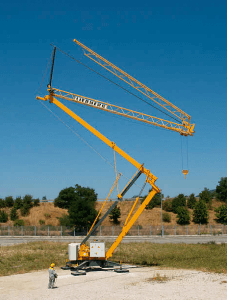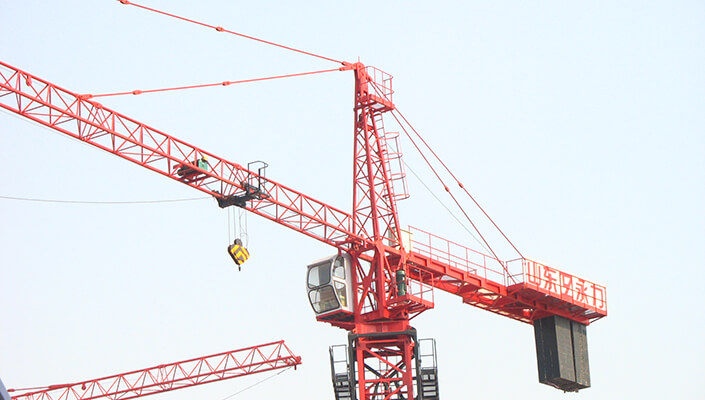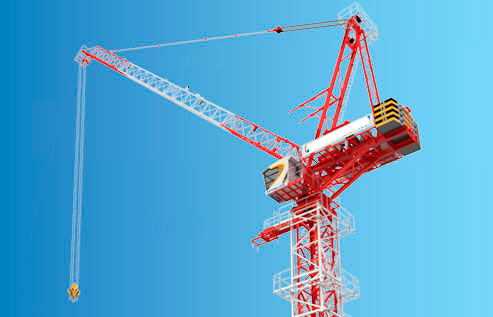Tower Crane
Types of Tower Crane and What They Do
The Tower Crane is a jib or boom crane mounted on a tower structure, demountable or permanent, including both horizontal and luffing jib types.
- These are commonly employed in construction industry for the movement of materials
- It often give the best combination of height and lifting capacity and are used in the construction of tall buildings.
- The construction crew uses the Tower Crane to lift materials such as steel, concrete, large tools and generators.

We offer the following Tower Crane:
- Self Erecting Tower Cranes
- Flat Top Tower Cranes
- Hammerhead Tower Cranes
- Luffing Jib Tower Cranes
SELF ERECTING TOWER CRANE

Reliability, quality and safety are the main facts of "Self Erecting Tower Crane".
Features :- The self-erecting range with 8 to 40 tm capacity and jib lengths up to 40 m is the result of a constant technological research.
- They are cranes suitable for both road and containerized transport.
- The erection is quick, carried out with simple and automated systems.
- First-rate quality components, variable frequency control drive assemblies, full galvanization of the structure make this range a landmark in the field.
FLAT TOP TOWER CRANE
The principal design feature of the flat-top tower crane is the compact head. With the emphasis on quick and easy assembly, the simplified design is appealing and an undeniable benefit to the customer. While a welcome sight on any type of job site, many flat top cranes have been used on construction projects or near airports where overhead clearance is frequently a concern.
Flat top tower cranes don’t have the “tops” of conventional cranes; they can be used in conjunction with other tower cranes at sites where space is confined or near the airports.
- Quality manufacturing designed for reliable performance hour after hour
- Easy maintenance access and built-in safety features to keep downtime to a minimum
- Ergonomic cabs provide the comfort required for long hours on the job

Hammerhead TOWER CRANE

Hammerhead cranes are versatile and efficient. They easily adapt to any project whether using concrete, steel or other types of construction materials. It’s practical modular construction makes transport, assembly and disassembly quick, easy and cost-effective. The hammerhead crane has earned a solid reputation for its dependable performance.
They’re well suited for heavy lifting and placement duties on the most challenging jobsites. And they can also help you save time on other jobsite duties by easily moving materials from one area to another.
- Quality manufacturing designed for reliable performance hour after hour
- Easy maintenance access and built-in safety features to keep downtime to a minimum
- Ergonomic cabs provide the comfort required for long hours on the job
- The SK series includes cranes with max capacity from 16 to 32t and jib lengths up to 80m
Luffing Jib TOWER CRANE
The Luffing Jip crane was designed to meet the requirements of the restricted job site. With a short tail-swing and the ability to raise and lower its boom, it easily adapts to construction site demands providing complete coverage while avoiding obstructions.
This tower cranes are specially designed for urban use. They feature outstanding reach requiring little room for slewing motions —a special advantage if many cranes are working at the same time on high-rise buildings and power plant sites.
- Quality manufacturing designed for reliable performance hour after hour
- Easy maintenance access and built-in safety features to keep downtime to a minimum
- Ergonomic cabs provide the comfort required for long hours on the job
- The range provides fixed and mobile counterweight cranes for higher performance.


